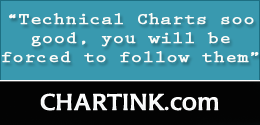Economy in U.S. Will Probably Keep Cooling as Lack of Jobs Limits Spending
By Courtney Schlisserman – Jul 31, 2010 9:30 AM GMT+0530 Sat Jul 31 04:00:33 UTC 2010
The world’s largest economy will probably keep cooling in the third quarter as a lack of jobs prompts American consumers to rein in spending.
The economy in the U.S. grew at a slower-than-forecast 2.4 percent annual rate from April through June after expanding at a 3.7 percent pace in the previous three months, Commerce Department figures showed yesterday. Household purchases climbed at a 1.6 percent rate following a 1.9 percent first-quarter gain that was smaller than previously estimated.
“The economy is still struggling to gain traction,” David Resler, chief economist at Nomura Securities International Inc. in New York, said in an interview. “Consumers are going to be very cautious about spending, especially about big-ticket items.”
Growth in the past three months was supported by increases in inventories, home construction, business investment and government spending that may not be matched this quarter. The pace of recovery in the first half of the year kept unemployment hovering near 10 percent, raising the risk that household purchases will not rebound.
Nomura’s Resler forecasts the economy will expand at a 1.7 percent pace from July through September.
Most stocks climbed yesterday as better-than-projected earnings overcame concerns the economy will slow. The Standard & Poor’s 500 Index were little changed to 1,101.6 at the 4 p.m. close in New York.
Deeper Slump
The worst U.S. recession since the 1930s was even deeper than previously estimated, reflecting bigger slumps in consumer spending and housing, according to the Commerce Department’s annual revisions also issued yesterday.
The economy shrank 4.1 percent from the fourth quarter of 2007 to the second quarter of 2009, compared with the 3.7 percent drop previously on the books, the report showed. Household spending fell 1.2 percent in 2009, twice as much as previously projected and the biggest decline since 1942.
“The typical pattern is to snap back hard and you just haven’t done that,” Jay Feldman, an economist at Credit Suisse in New York, said in an interview. “We’re not calling for a double-dip, it’s a moderate recovery. Things will appear to be slowing.”
Credit Suisse forecasts growth will average 2.75 percent in the second half of the year, compared with 3.1 percent for the first six months.
Below-Average Rebound
Over the past 12 months, the economy grew 3.2 percent. The first years of recoveries from recessions in the mid 1970s and early 1980s averaged 7 percent, Feldman said.
Economists at HSBC Securities USA Inc. in New York forecast average growth of 2 percent from July through December, while the Conference Board, a New York-based research group projects 1.6 percent.
Excluding growth in inventories and residential spending, gross domestic product rose at a 0.8 annual rate percent as consumer purchases slowed and the trade deficit swelled.
The trade gap in the second quarter widened to $425.9 billion from $338.4 billion, subtracting 2.8 percentage points from growth, the biggest reduction since 1982, yesterday’s report showed. Imports grew at a 29 percent pace, while exports climbed 10 percent.
Residential construction climbed at a 28 percent pace last quarter, the biggest gain since 1983, rebounding from a weather- related first-quarter slump and supported by a government homebuyer tax credit. The expiration of the incentive has caused sales to slump, indicating the industry will weigh on growth for the rest of the year.
More Inventories
The buildup of inventories may also represent an economic stumbling block. Stockpiles climbed at a $75.7 billion annual pace last quarter, the biggest gain in more than four years. Without a pickup in consumer spending, inventories are not likely to repeat that performance, according to Joel Naroff, president of Naroff Economic Advisors Inc. in Holland, Pennsylvania.
Similarly, a 22 percent surge in business investment, the biggest advance since 1997, isn’t sustainable, he said.
“Businesses are pretty much at the point where they will only add to inventories at a replacement basis rather than a rebuilding basis,” Naroff said in an interview. “Once they finish investing in equipment and make all the adjustment in inventories, now they are back to fundamentals. There is nothing there that tells me the rest of this year will be anything special.”
Better Outlook
Not all economists are convinced the outlook is as dour.
“We find some constructive takeaways for the prospects for growth in the second half of the year,” John Ryding, chief economist at RDQ Economics in New York, said in a note to clients. “The recovery has been less dependent on consumer spending than we had thought.”
Also, stockpiles are near record lows compared to sales, indicating companies have not overbuilt, while orders for durable goods indicate business investment “appears to be ramping up,” said Ryding.
The Institute for Supply Management-Chicago Inc. said yesterday its business barometer rose to 62.3 this month, exceeding the median forecast of economists surveyed by Bloomberg. Figures greater than 50 signal expansion and the group’s employment and new orders gauges rose as well.
Americans are also cleaning up their balance sheet, putting themselves in a better position to spend, Ryding said.
The consumer savings rate has been rising, indicating “consumers may be in better financial shape, and if that’s the case, we’re likely to get a little bit of a pickup in consumer spending growth,” he said.
source: Bloomberg.com
Similar Posts:
- Recovery not as strong as previously thought – Wall Street
- Q4 GDP down 3.8 percent, biggest drop since 1982 – USA
- Stocks Fall as Treasuries Rise After U.S. Jobs Report – Wall Street
- U.S. Jobless Claims Dip, Consumer Views Gain – giving the world’s largest economy a boost heading into 2012.
- Economy grows at 5.7 pct pace, fastest since 2003 – Wall Street
Latest Query
- by Sam
Search Our Archives
Research Desk
- Stocks Trading above their 50 day moving average - DMA In Stock Research
- Download free Ebooks based on Technical Analysis In Personal Training
- TOP 100 Stocks with the Highest P/E as on July 14th, 2013 In Stock Research
- TOP 100 Stocks with the Lowest P/E as on July 14th, 2013 In Stock Research
- Charting Pathsala - Your guide to Techincals In Technical Analysis





